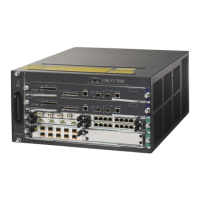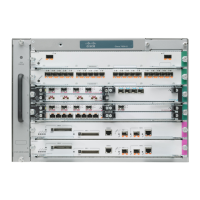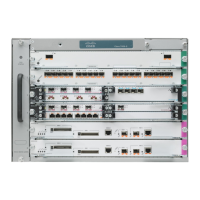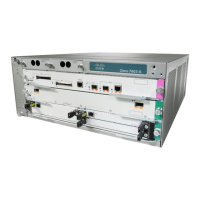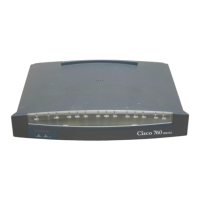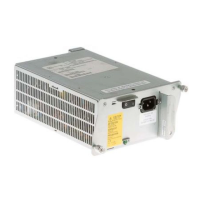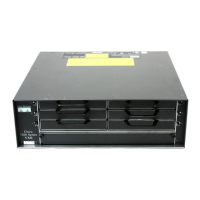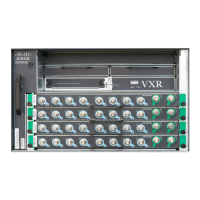6-6
Cisco 7600 Series Router Cisco IOS Software Configuration Guide—12.1E
78-14064-04
Chapter 6 Configuring Interfaces
Defining and Using Interface-Range Macros
Defining and Using Interface-Range Macros
You can define an interface-range macro to automatically select a range of interfaces for configuration.
Before you can use the macro keyword in the interface range macro command string, you must define
the macro.
To define an interface-range macro, perform this task:
This example shows how to define an interface-range macro named enet_list to select Fast Ethernet ports
5/1 through 5/4:
Router(config)# define interface-range enet_list fastethernet 5/1 - 4
To show the defined interface-range macro configuration, perform this task:
This example shows how to display the defined interface-range macro named enet_list:
Router# show running-config | include define
define interface-range enet_list FastEthernet5/1 - 4
Router#
To use an interface-range macro in the interface range command, perform this task:
This example shows how to change to the interface-range configuration mode using the interface-range
macro enet_list:
Router(config)# interface range macro enet_list
Router(config-if)#
Configuring Optional Interface Features
These sections describe optional interface features:
• Configuring Ethernet Interface Speed and Duplex Mode, page 6-7
• Configuring Jumbo Frame Support, page 6-10
Command Purpose
Router(config)# define interface-range macro_name
{vlan vlan_ID - vlan_ID} | {type
1
slot/port - port}
[, {type
1
slot/port - port}]
1. type = ethernet, fastethernet, gigabitethernet, or tengigabitethernet
Defines the interface-range macro and save it in NVRAM.
Router(config)# no define interface-range macro_name
Deletes a macro.
Command Purpose
Router# show running-config
Shows the defined interface-range macro configuration.
Command Purpose
Router(config)# interface range macro macro_name
Selects the interface range to be configured using the values
saved in a named interface-range macro.

